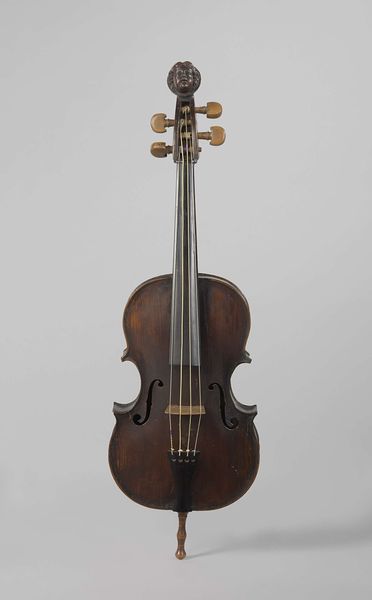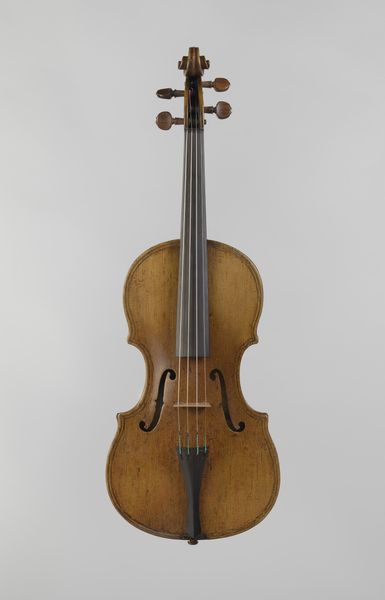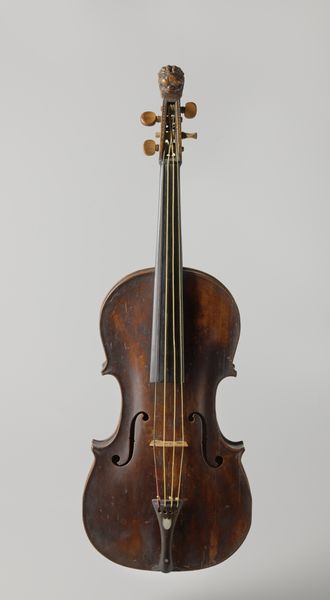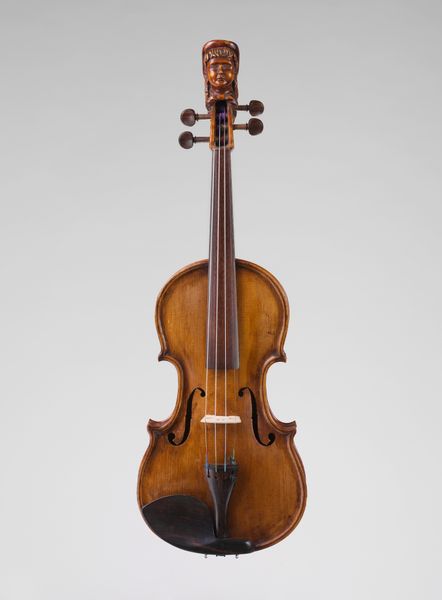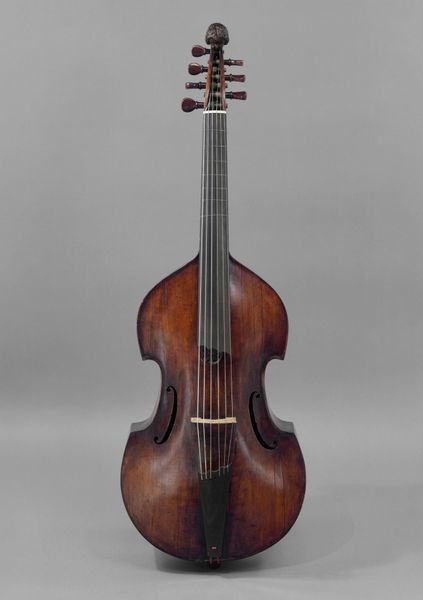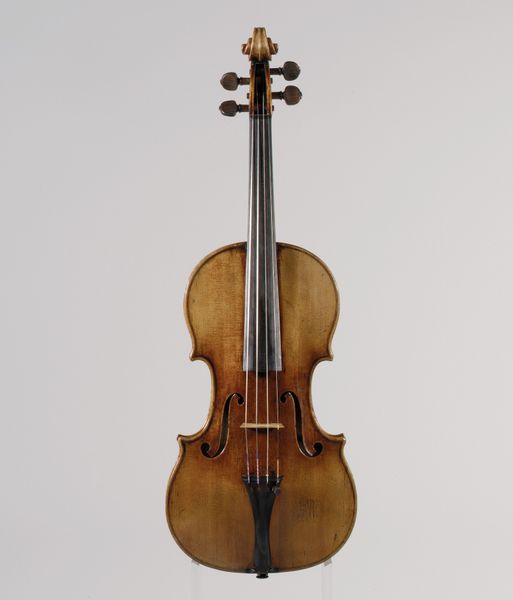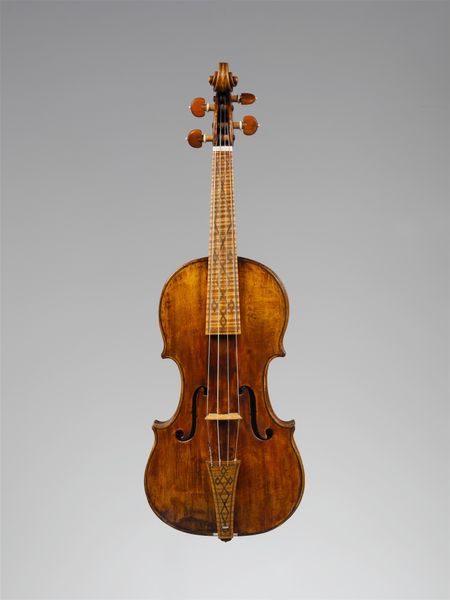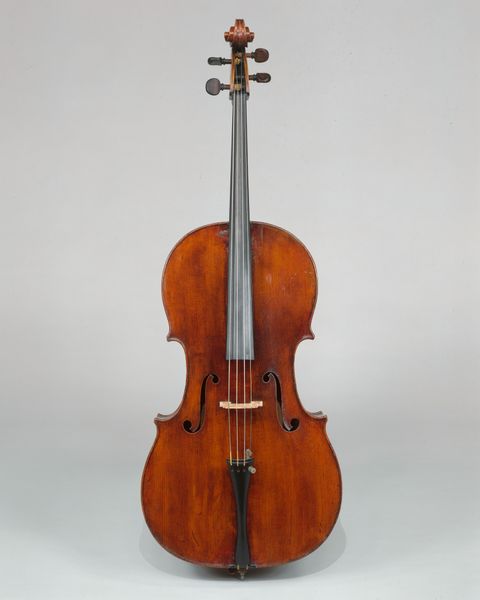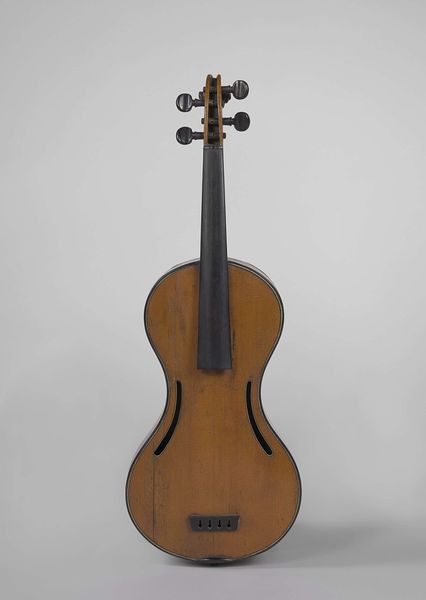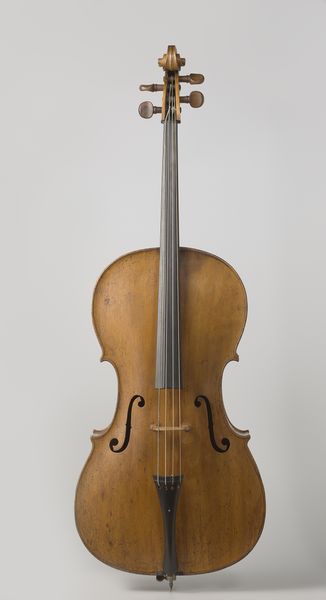
carving, wood
#
carving
#
baroque
#
wood
Dimensions: length 67.0 cm, width 24.0 cm, depth 19.0 cm
Copyright: Rijks Museum: Open Domain
This is a soprano viol, crafted by Sebastian Mayr, its rich wood speaking of harmony and resonance. But consider the viol's form – its curves, reminiscent of the female form, echo ancient fertility symbols and a connection to life's generative forces. Notice the f-holes, stylized openings that allow the sound to escape; these evolved from simple sound holes in earlier stringed instruments and resemble the eyes on a human face. This motif, transposed across time, finds echoes in the architecture of Gothic cathedrals, where similar forms invite the divine to resonate within sacred spaces. The viol's strings, stretched taut, symbolize the tension between chaos and order, a theme that recurs across cultures. Think of the tightened bowstrings of Apollo, the Greek god of music and order, which is not so different from the hunter's bow, signifying life and death, creation and destruction. This duality connects to our subconscious understanding of art, creating emotional experiences that are both deeply personal and universally human. The image of the viol, in its entirety, captures this cyclical progression; its significance evolves but still reflects the soul's search for harmony.
Comments
rijksmuseum about 2 years ago
⋮
When the viol family gave way to the violin family, only the bass viol survived into the 18th century. In France the soprano viol enjoyed popularity until late in the 17th century, but elsewhere the smaller viols disappeared. A few survived by being converted, such as this soprano viol, which was used as a viola until the 19th century.
Join the conversation
Join millions of artists and users on Artera today and experience the ultimate creative platform.

